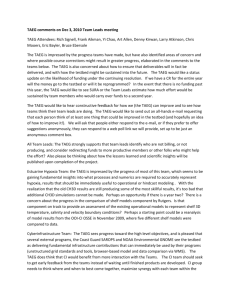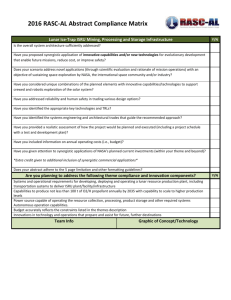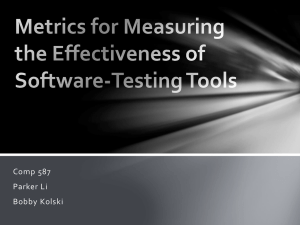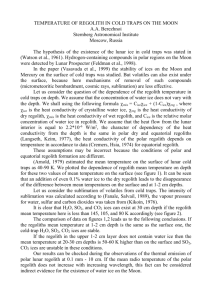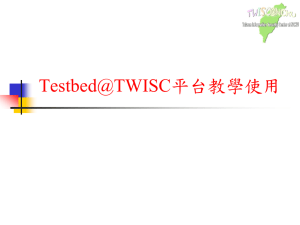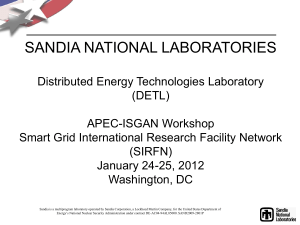Workforce Innovation in Regional Economic Development (WIRED)
advertisement
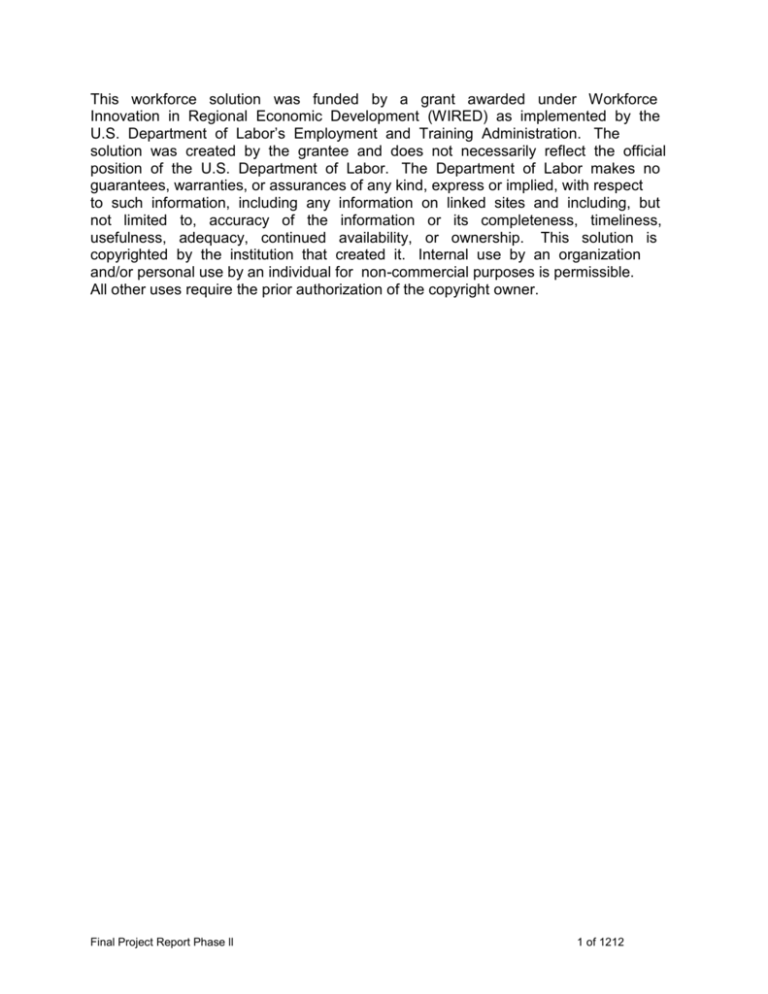
This workforce solution was funded by a grant awarded under Workforce Innovation in Regional Economic Development (WIRED) as implemented by the U.S. Department of Labor’s Employment and Training Administration. The solution was created by the grantee and does not necessarily reflect the official position of the U.S. Department of Labor. The Department of Labor makes no guarantees, warranties, or assurances of any kind, express or implied, with respect to such information, including any information on linked sites and including, but not limited to, accuracy of the information or its completeness, timeliness, usefulness, adequacy, continued availability, or ownership. This solution is copyrighted by the institution that created it. Internal use by an organization and/or personal use by an individual for non-commercial purposes is permissible. All other uses require the prior authorization of the copyright owner. Final Project Report Phase ll 1 of 1212 Workforce Innovation in Regional Economic Development (WIRED) California Innovation Corridor FINAL WIRED Phase II PROJECT REPORT Subgrantee’s Organization Name: California Space Authority (CSA) Project Number and Name: 1.1 Economic Development Model______ Contact Person: Matt Everingham Contact Phone Number including extension, if applicable (310)208-9468 A. Project Information 1. Describe your final project activities October 1 – November 30 -Testbed obtained operational status -Provided venue for the Regolith Excavation Challenge event, including the testing of 21 robotic excavation systems -Exceeded the metric to outreached to at least 6 universities -Exceeded the metric for at least 20 students to utilize the testbed 2. Give a brief description of the lunar regolith simulant testbed project and your organization’s role (Scope of Work) within it -The Regolith Simulant Testbed project encompassed securing a place to locate the Regolith Simulant Testbed such that it could be made accessible to a broader spectrum of the space exploration community, bringing that facility up to operational status, and outreaching to potential users to make them aware of it's availability. In the case of this project, the space exploration community included the industry, government, and especially academic sectors. 3. Please indicate the cumulative amount of your partner expenditures on this project in 2009 -?? 4. List and describe your project products/deliverables. Attach now if not previously provided WIRED Program Manager. - Regolith Simulant Testbed installation and operational acceptance Final Project Report Phase ll 2 of 1212 - Regolith Simulant Testbed outreach flier advertising the capabilities of the testbed to communities of interest -List of 20 students who utilized the testbed during the project -List of at least 6 universities that were made aware of the testbed's availability 5. Describe your key accomplishments in the areas of Innovation Support, Supplier Competitiveness and/or Talent Development on this project and their importance to the Corridor, the State, the nation. What about the outcomes was “transformational”? -For the last five years, NASA has been leading a national (and international) initiative focused on a return to the lunar surface for long duration missions, potentially to include commercial participation in this endeavor. Any lunar surface mission to include humans is likely to require robotic precursor missions to perform reconnaissance, site preparation, and resource development tasks. The Regolith Simulant Testbed is aimed at preparing the current and future developers of these robotic and human missions by providing an opportunity to gain experience and training in an element of the lunar environment not previously available as an operational facility at the same scale. The operational environment on the lunar surface is largely driven by interactions with the lunar regolith due to it's unique properties. The Lunar Regolith Simulant Testbed provides the capability to test integrated lunar rover, excavation, and other robotic systems that are currently in development to meet the national needs defined by NASA and the international lunar exploration community. Locating this capability in the Corridor as an operational facility allows for low cost testing of high risk design concepts. Locating the testbed within the Silicon Valley at the NASA Ames Research Center, where there is a culture of risk and innovation, enhances the potential benefit to the Corridor from this type of facility. Because this facility provides capabilities unique in the world, it provides an edge to those who are most able to utilize it for testing and training and thus enhancing national competitiveness in the reemerging lunar exploration market. Because NASA and other national space agencies are newly focused on including commercial operations in their exploration efforts, this market has the potential to increase exponentially if commercial operations are able to Final Project Report Phase ll 3 of 1212 achieve self sustaining status. This would require a reduction in cost of fielding and operating space exploration systems, which is facilitated by the availability of the capability that the Regolith Simulant Testbed provides. 6. Were any of your organization’s policies or processes reviewed, refined or changed as a result of this WIRED project? If so, please explain how and why. Not Applicable. 7. If your project involved a literature review, indicate up to five key readings that impacted your project, explaining significance. -Lunar Sourcebook: A User's Guide to the Moon, Cambridge University Press -DRAFT LEAG Roadmap, Lunar Exploration and Analysis Group (http://www.lpi.usra.edu/leag/ler_draft.shtml) -Space Rush: The Case for Infrastructure Based Space Exploration, Dan Rasky, Bruce Pittman, Lynn Harper, Mark Newfield, AIAA2009-6529 8. List key local and regional relationships/partnerships you built or enhanced through this project, indicating the potential or current impact of these on your local/regional workforce, education or economic development domains Relationship Nature of Org/Group WIRED Activity Involved Relationship Started or Enhanced? Impact on workforce, education or economic development? Collaborator Carnegie Mellon University Regolith Simulant Testbed testing Established Established the groundwork for future collaboration on education focused projects Final Project Report Phase ll 4 of 1212 9. In your work on this project, are there statewide or national associations or consortia with which you have interfaced? Please list, explain nature of the interface and indicate whether interface will continue. State or Nat’l Association, Organization or Consortia Nature of Org/Group WIRED Activity Involved Relationship Started or Enhanced? Impact on broader workforce, education or economic development? 10. Please list any major presentations you have given related to this project, describing the nature of the audience and type of presentation (keynote, panel or workshop presentation, radio/television interview, etc.) Organization Requesting Major WIRED Project Presentation Location/Venue of Presentation; Name/Title/Org of Presenter WIRED Activity, Project or Program Showcased Type and Number of Audience Stakeholders Present Type of Presentation (Panel, keynote, interview, etc.) American Institute of Aeronautics and Astronautics AIAA Space 2009 Regolith Simulant Testbed Approximatel y 30 lunar exploration researchers and community White paper published in conference proceedings and presentation Final Project Report Phase ll 5 of 1212 members during session 33SR-3 In-Situ Resource Utilization (ISRU) Related Systems and Concepts 11. Please list and describe any white papers, monographs, studies, reports, surveys, etc. developed by your organization or your subcontractor, describing the purpose and nature of the document. Organization/Author(s) developing report, study, survey, etc. Type (white paper, survey, study, etc.) Purpose Target Audience(s) CSA White Paper Report on Regolith Simulant Testbed Capabilities Engineers and researchers in Government , Industry, and Academia CSA Presentatio n Report on Regolith Simulant Testbed Final Project Report Phase ll Nature Provided an overview of the testbed capabilities at the AIAA Space 2009 conference, providing for a dialogue with potential users Engineers EuroSpace and ward Researchers Foundation in invited CSA 6 of 1212 Capabilities Government , Industry, and Academia to present at their Conference on Space Elevators, Tethers and Lunar Industrializa tion Challenges. 12. Please recount the story of one worker or education, workforce, or economic development professional whose work or life was significantly enhanced or positively altered by interface with your work on this project or as a result of your work this project (worker can be you, a colleague, a dislocated worker, an adult student, etc.) -Paul Ventimiglia, a student of Worcester Polytechnic Institute was the winner of a $500,000 prize purse from the NASA Centennial Challenges Program as a result of demonstrating a robotic excavation system in the regolith simulant testbed. Paul has said that he plans to start a robotics company as a result of this experience. 13. If applicable, list and describe any videos, websites, databases or software developed by your organization or subcontractor for this project Final Project Report Phase ll 7 of 1212 14. If applicable, list and describe any curriculum, course outline, training manual or training provider resource guide developed with WIRED funding for this project Type/Name of Material Developed (curriculum, course outline, training manual, training resource guide) Purpose/Use for WIRED project Lab Safety Plan Outlines the safety precautions required for operating the Regolith Simulant Testbed Potential Ongoing Use As the testbed is utilized by researchers, this safety plan will need to be followed. It was also required by NASA to obtain operational status Standard Operating Describes As the Procedure the standard testbed is operating utilized by procedure for researchers, the testbed, this including document will compaction be used to process guide their lab procedures Final Project Report Phase ll Sustainability Notes, if applicable Benefit to Partner, Region, State or Nation Each user of the testbed will not be required to develop a lab safety plan from scratch, reducing the resources required for continued utilization Each user of the testbed will not need to create an operating procedure from scratch, reducing the resources required to utilized the testbed 8 of 1212 15. Please indicate cumulative amount of other funds outside of WIRED resources you contributed during the life of the grant for this project. 16. As you feel appropriate, please comment on promising approaches, best practices, lessons learned regarding any of the following: Project Management/Project Implementation In the future when interfacing with a large government research facility, it is often difficult or not possible to determine all of the processes that will be required to establish a new lab as operational. This makes it difficult to establish a project time line and maintain it. In the future, this will require additional management reserve in the project timeline in order to ensure an on time delivery. Replication Sustainability 17. My work, or my organization’s work has enabled the following Corridor WIRED metrics (as described in the Metrics Reporting Document, this project) to be achieved. -Engage at least 20 students in the utilization of the Regolith Simulant testbed. There were several teams that used the Regolith Simulant Testbed while competing in the Regolith Excavation Challenge. Those teams included students from the following educational institutions: California Polytechnic State University San Luis Obispo (1 student), Colorado School of Mines (5 students), Florida Institute of Technology (1 student), Brevard Community College (1 student), Palm Bay Senior High School (1 student), Carnegie Mellon University (8 students), Worcester Polytechnic Institute (5 students), Purdue University (1 student), and University of California San Diego (1 student). -Outreach to at least 6 universities regarding the usage of the testbed. We held meetings with professors Farhat of Stanford University Department of Aeronautics and Astronautics, Al-Ali of Carnegie Mellon University West Carnegie Mellon Innovations Lab (CMIL), and Kitts of Santa Clara University Robotic Systems Laboratory (RSL). All three of these have active robotics programs and expressed some interest in future collaboration. (I am working on sending out the outreach flier to several other CA universities which we can list once I get the flier out.) Final Project Report Phase ll 9 of 1212 B. California Innovation Corridor WIRED Initiative 1. Did the Corridor discover any innovative solutions to economic and workforce development challenges? If so, describe. Establishment of the operational lunar regolith simulant testbed is an innovative solution to education and workforce development challenges. Having the testbed available will better enable the workforce to support lunar exploration technologies. The testbed can also improve the educational experience for students and better prepare them for careers with employers involved in lunar exploration. 2. Please share what you believe to be the Corridor WIRED project’s greatest accomplishments in any or all of the following areas: Innovation Support/Purposeful support for innovation and entrepreneurship -Enabling the low cost and thus low risk demonstration of new platforms for lunar exploration, uniquely important to the emerging commercial lunar exploration community which has the potential to expand into a significant economic driver. Supply Chain Competitiveness/Continuity of progam/service outcomes across Corridor’s supplier training provider/support system -The demonstrations enabled by the testbed allow potential suppliers to demonstrate unique capabilities in a way that was not previously available. Talent Development/Responsive, flexible education/workforce systems which anticipate and respond to global market changes, workforce needs across systems -The combination of open access, co-location with a NASA research center, and proximity to several university campuses enable the testbed to be most accessible to researchers and students focused on the emerging market of lunar exploration. Explain the “success stories” you feel the Corridor has to share around any or all of the following: Developing a regional economic development/innovation culture or ecosystem -By being located at the heart of the Silicon Valley region, well known for its culture of innovation and enabling a relatively low 3. Final Project Report Phase ll 10 of 1212 risk opportunity to test innovative technologies for the emerging market of lunar exploration, the testbed will help to create an intersection between entrepreneurial and space exploration ecosystems present in the region. The NASA Research Park (the part of NASA Ames Research Center that houses the testbed) published a story in the August newsletter about the Regolith Simulant Testbed. (http://researchpark.arc.nasa.gov/nrppost/09_Summer_Post_sml.p df) Transforming the public workforce system Transforming education to better address required 21st Century workplace, high-tech, high-growth job skills/abilities -By making the testbed available to the academic research community, the testbed provides a low cost opportunity to test new technologies developed to address the emerging market of lunar exploration including robotics, advanced excavation systems, and advanced dust mitigation systems. Other 4. What is your own positive, personal “take-away” from the Corridor WIRED Initiative? What skills have you gained or what you have personally learned, discovered, accomplished, that will support you or your organization in becoming a more effective stakeholder for California and U.S. 21st Century competitiveness? -I have learned that remaining competitive in the 21st century economy requires some degree of systems thinking at nearly all levels of government, industry and academia in order to have the flexibility that is now required of them. One of the tools that can enable the execution of the plans derived from systems thinking is a well developed network that spans across regions and organizations and across the boundaries that exist among the government, academia, industry, and workforce sectors. The combination of applied systems thinking and a diverse network allow for creative and flexible use of resources to obtain common goals while retaining the competitive and innovative spirit that is so critical to continued success. Through my participation in the WIRED initiative, I have seen some of the transformational effects that this approach can provide and that by building this approach into the culture of organizations, they are enabled to pursue more functional, efficient and effective solutions that might have been Final Project Report Phase ll 11 of 1212 considered too risky without the tools of systems thinking and a cross-sector network available to support them. Final Project Report Phase ll 12 of 1212
